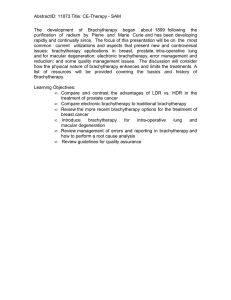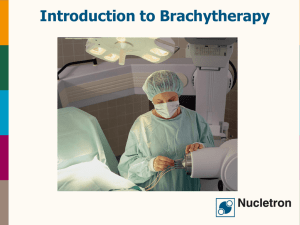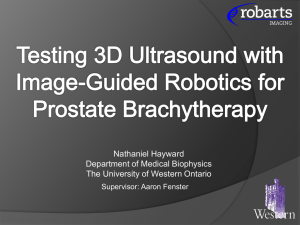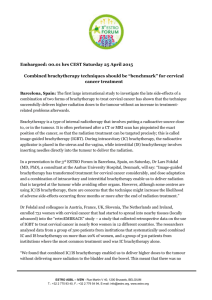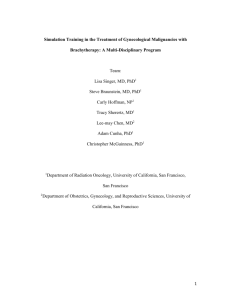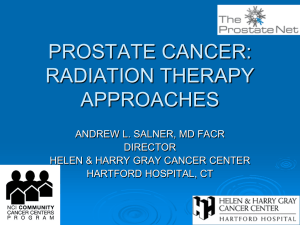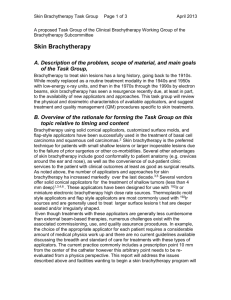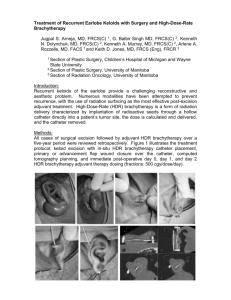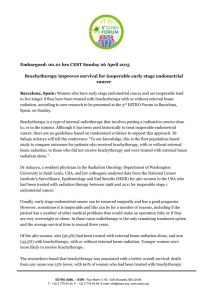Newsletter #2 - PROS - Paediatric Radiation Oncology Society
advertisement
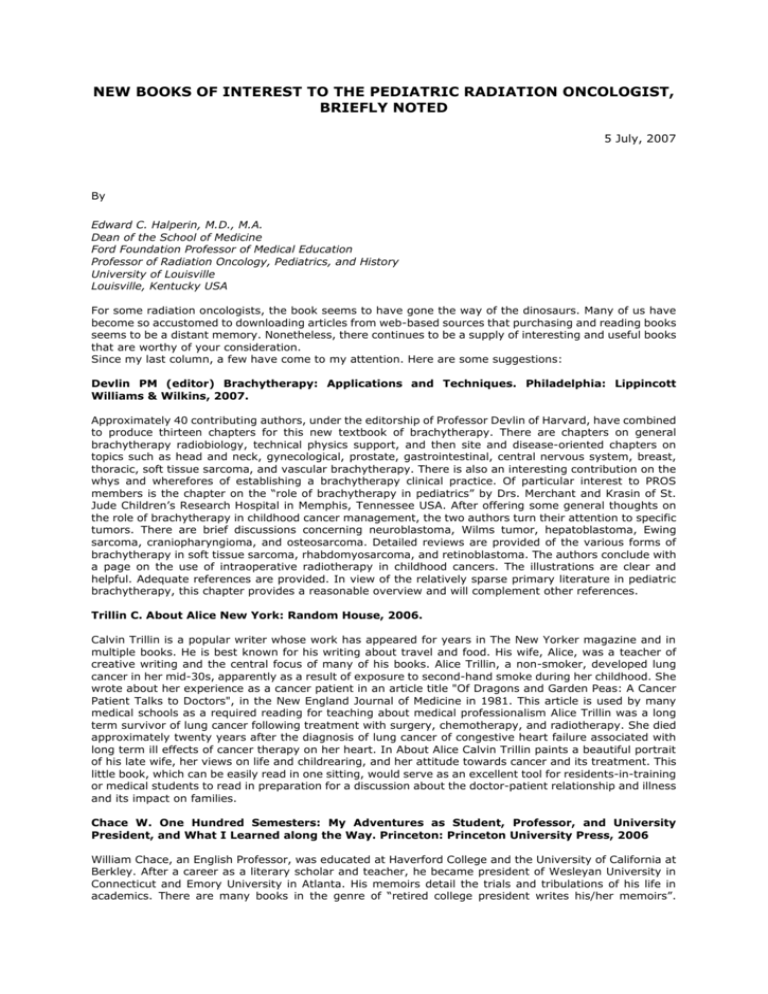
NEW BOOKS OF INTEREST TO THE PEDIATRIC RADIATION ONCOLOGIST, BRIEFLY NOTED 5 July, 2007 By Edward C. Halperin, M.D., M.A. Dean of the School of Medicine Ford Foundation Professor of Medical Education Professor of Radiation Oncology, Pediatrics, and History University of Louisville Louisville, Kentucky USA For some radiation oncologists, the book seems to have gone the way of the dinosaurs. Many of us have become so accustomed to downloading articles from web-based sources that purchasing and reading books seems to be a distant memory. Nonetheless, there continues to be a supply of interesting and useful books that are worthy of your consideration. Since my last column, a few have come to my attention. Here are some suggestions: Devlin PM (editor) Brachytherapy: Applications and Techniques. Philadelphia: Lippincott Williams & Wilkins, 2007. Approximately 40 contributing authors, under the editorship of Professor Devlin of Harvard, have combined to produce thirteen chapters for this new textbook of brachytherapy. There are chapters on general brachytherapy radiobiology, technical physics support, and then site and disease-oriented chapters on topics such as head and neck, gynecological, prostate, gastrointestinal, central nervous system, breast, thoracic, soft tissue sarcoma, and vascular brachytherapy. There is also an interesting contribution on the whys and wherefores of establishing a brachytherapy clinical practice. Of particular interest to PROS members is the chapter on the “role of brachytherapy in pediatrics” by Drs. Merchant and Krasin of St. Jude Children’s Research Hospital in Memphis, Tennessee USA. After offering some general thoughts on the role of brachytherapy in childhood cancer management, the two authors turn their attention to specific tumors. There are brief discussions concerning neuroblastoma, Wilms tumor, hepatoblastoma, Ewing sarcoma, craniopharyngioma, and osteosarcoma. Detailed reviews are provided of the various forms of brachytherapy in soft tissue sarcoma, rhabdomyosarcoma, and retinoblastoma. The authors conclude with a page on the use of intraoperative radiotherapy in childhood cancers. The illustrations are clear and helpful. Adequate references are provided. In view of the relatively sparse primary literature in pediatric brachytherapy, this chapter provides a reasonable overview and will complement other references. Trillin C. About Alice New York: Random House, 2006. Calvin Trillin is a popular writer whose work has appeared for years in The New Yorker magazine and in multiple books. He is best known for his writing about travel and food. His wife, Alice, was a teacher of creative writing and the central focus of many of his books. Alice Trillin, a non-smoker, developed lung cancer in her mid-30s, apparently as a result of exposure to second-hand smoke during her childhood. She wrote about her experience as a cancer patient in an article title "Of Dragons and Garden Peas: A Cancer Patient Talks to Doctors", in the New England Journal of Medicine in 1981. This article is used by many medical schools as a required reading for teaching about medical professionalism Alice Trillin was a long term survivor of lung cancer following treatment with surgery, chemotherapy, and radiotherapy. She died approximately twenty years after the diagnosis of lung cancer of congestive heart failure associated with long term ill effects of cancer therapy on her heart. In About Alice Calvin Trillin paints a beautiful portrait of his late wife, her views on life and childrearing, and her attitude towards cancer and its treatment. This little book, which can be easily read in one sitting, would serve as an excellent tool for residents-in-training or medical students to read in preparation for a discussion about the doctor-patient relationship and illness and its impact on families. Chace W. One Hundred Semesters: My Adventures as Student, Professor, and University President, and What I Learned along the Way. Princeton: Princeton University Press, 2006 William Chace, an English Professor, was educated at Haverford College and the University of California at Berkley. After a career as a literary scholar and teacher, he became president of Wesleyan University in Connecticut and Emory University in Atlanta. His memoirs detail the trials and tribulations of his life in academics. There are many books in the genre of “retired college president writes his/her memoirs”. Academic physicians, however, will enjoy reading Chace’s musings on the role of academic medicine. He ponders the peculiar demand of academic health centers in the United States to “increase market share”, “grow the clinical business”, and “compete in the marketplace.” Chace wonders: What became of the idea that Schools of Medicine needed a sufficient number of patients to fulfill their teaching and research missions? When, he asks, did these institutions morph into large-scale businesses and engines of the local and academic economies? These are, indeed, important questions for the future of the academic medical enterprise.
